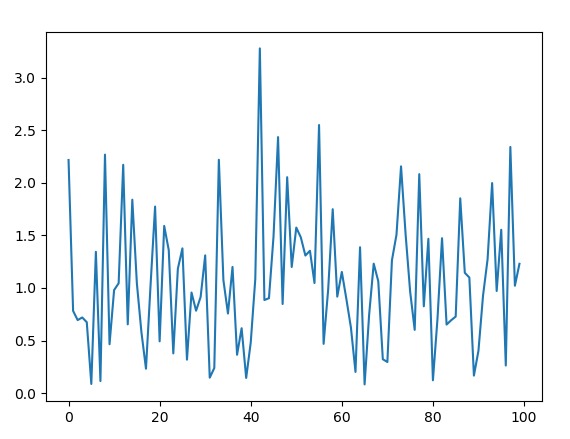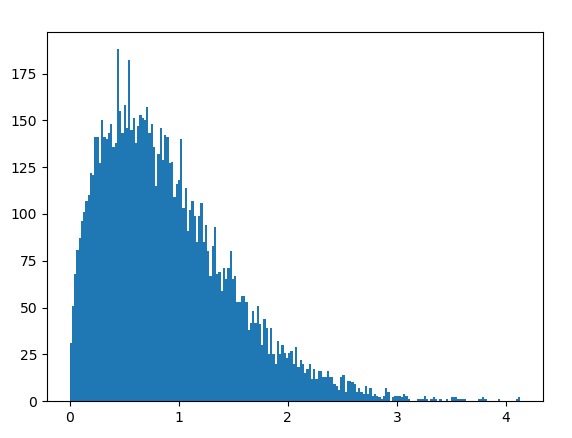random模块用于在Python中生成随机数。实际上不是随机的,而是用于生成伪随机数的。这意味着可以确定这些随机生成的数字。
weibullvariate()
weibullvariate() 是内置的方法random模块。它用于返回具有Weibull分布的随机浮点数。
用法: random.weibullvariate(alpha, beta)
参数:
alpha:scale参数
beta:形状参数
返回:随机威布尔分布浮点数
范例1:
# import the random module
import random
# determining the values of the parameters
alpha = 1
beta = 1.5
# using the weibullvariate() method
print(random.weibullvariate(alpha, beta))输出:
0.7231214446591137
范例2:我们可以多次生成该数字并绘制图形以观察威布尔分布。
# import the required libraries
import random
import matplotlib.pyplot as plt
# store the random numbers in a
# list
nums = []
alpha = 1
beta = 1.5
for i in range(100):
temp = random.weibullvariate(alpha, beta)
nums.append(temp)
# plotting a graph
plt.plot(nums)
plt.show()输出:

范例3:我们可以创建一个直方图来观察威布尔分布的密度。
# import the required libraries
import random
import matplotlib.pyplot as plt
# store the random numbers in a list
nums = []
alpha = 1
beta = 1.5
for i in range(10000):
temp = random.weibullvariate(alpha, beta)
nums.append(temp)
# plotting a graph
plt.hist(nums, bins = 200)
plt.show()输出:

相关用法
- Python Wand function()用法及代码示例
- Python tell()用法及代码示例
- Python now()用法及代码示例
- Python oct()用法及代码示例
- Python cmp()用法及代码示例
- Python map()用法及代码示例
- Python int()用法及代码示例
- Python id()用法及代码示例
- Python dir()用法及代码示例
- Python ord()用法及代码示例
- Python sum()用法及代码示例
- Python hex()用法及代码示例
- Python frexp()用法及代码示例
- Python cmath.tan()用法及代码示例
- Python isdisjoint()用法及代码示例
- Python strftime()用法及代码示例
- Python math.sin()用法及代码示例
注:本文由纯净天空筛选整理自Yash_R大神的英文原创作品 random.weibullvariate() function in Python。非经特殊声明,原始代码版权归原作者所有,本译文未经允许或授权,请勿转载或复制。
